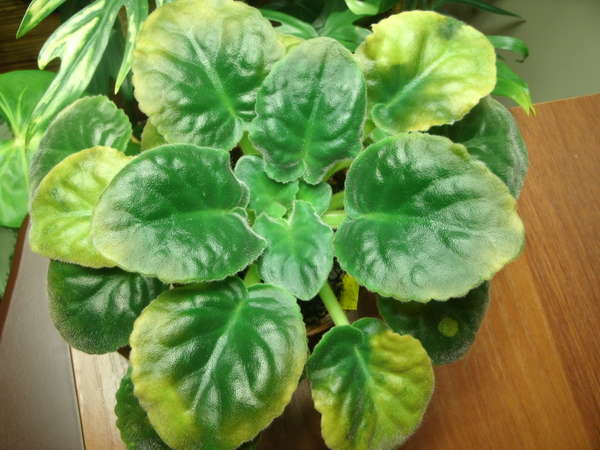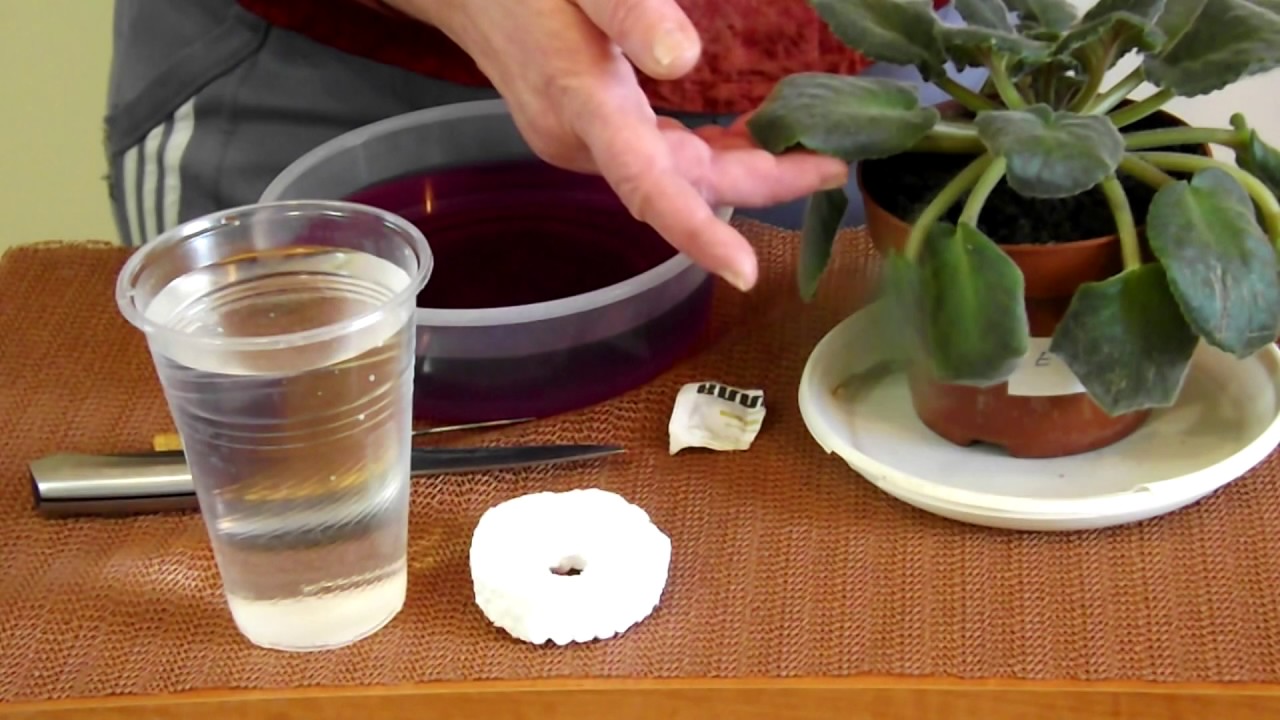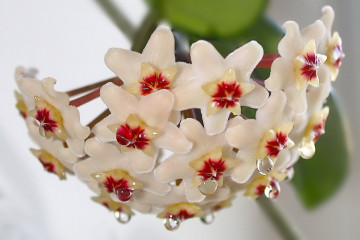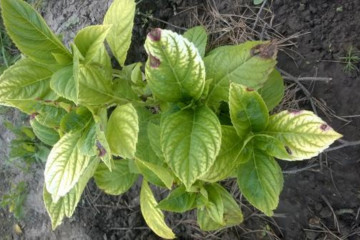How to treat violet diseases at home
Content:
- General characteristics of the plant
- Why do violets turn yellow leaves
- Why do the leaves curl inward
- Leaves are covered with spots: reasons
- What does it mean if violet leaves become lethargic
- Why leaves are covered with a white coating like flour
- If the violet withers, what diseases can be the cause
- Disease prevention measures and their treatment
Houseplants are used to decorate a home or liven up the interior. These are often violets. Saintpaulias, as botanists call them, are very beautiful, but vulnerable, require special care and attention. Diseases and pests that appear due to improper conditions of detention are considered especially dangerous. Diseases of violets can be identified by the appearance of the plant. The principle of changing the color and shape of leaves, flowers and root system can indicate a specific problem. The list of infections and pests is huge, so sometimes it is difficult to establish the cause.
General characteristics of the plant
The violet has an attractive appearance. A small bush will not take up much space, and the flowering process will surprise with its diversity. A more detailed description of Saintpaulias:
- bush 10-15 cm high;
- the rosette consists of several tiers of green leaves, fluffy to the touch;
- the frill of the plate is serrated, the color is from dark green to light green;
- the diameter of the leaf can be from 2 cm to 10 cm;
- at the time of flowering, a peduncle appears, at the top of which an inflorescence of several buds is formed;
- the color range of the buds can be varied. The shape, size and texture of the petals is individual for each variety.
In the process of development, growth and flowering, various problems can appear. Usually this is a deterioration in the appearance of the plant. In extreme cases, the flower may even die. There are a lot of reasons - diseases, infections, pests.
Why do violets turn yellow leaves
There is a problem with the aerial part of the plant, in particular, the leaves change color. There are several reasons why violet leaves turn yellow:
- frequent watering;
- improperly selected substrate;
- lack of nutrients in the soil;
- unsuitable place for placing a flowerpot;
- natural change of leaf cover;
- the need for a transplant due to the aging of the flower;
- leaves can brighten, and then turn yellow - this is a sign of an incorrect degree of illumination.
To remedy the situation, it is enough to change the location of the flowerpot, make a transplant, and normalize the irrigation regime.
Why do the leaves curl inward
It so happens that the leaves of the violet curl for unknown reasons. Such a problem can cause the death of the flower. Why do violets have leaves curling inward during the development of saintpaulia:
- an excess of nutrients in the substrate;
- too frequent watering;
- pests that have settled under the leaf;
- incorrect sprout transplant;
- inappropriate degree of lighting.
In order for the leaf plate to stop deforming, you need to carefully look at the plant and adjust the conditions of detention.
Leaves are covered with spots: reasons
Sometimes spots of different colors appear on the plates, which can be located along the entire perimeter of the aboveground part of the plant. This appears very often in indoor specimens.
Violet leaf spots can appear as a result of many reasons:
- the plate can become covered with brown spots, which are obtained as a result of direct sunlight hitting them. These are burns;
- in those places where water drops fall on the leaves, the surface may darken, and then acquire a different color;
- if the flowerpot is in a draft, then dark formations will appear on the foliage.
Removing damaged parts can save the plant from imminent death.
What does it mean if violet leaves become lethargic
A situation can become dangerous for the life of a flower when the stem begins to lose its elasticity, the aboveground part of the indoor flower suddenly becomes sluggish. There may be several reasons for this wilting:
- a fungal infection has got into untreated sections;
- serious mechanical damage;
- the appearance of pests that feed on Saintpaulia juice;
- wrong temperature regime for the plant;
- diseases of late blight and fusarium, in which rust-colored spots are characteristic.
The question often arises when a violet has sluggish leaves, what to do to resuscitate the plant. The best solution would be a transplant. At the moment of sprout extraction, all parts of the root and aerial system can be examined. Remove the soft parts and transplant the rest of the seedling into a new container.
Why leaves are covered with a white coating like flour
White bloom on violets is common, since the disease that affects the plant is very common. A bloom appears on the leaves, which from a distance looks like flour sprinkled on greens. This is powdery mildew. The reasons for its appearance:
- high humidity in the room;
- wrong temperature regime in the room;
- excessive watering;
- poor care of an indoor flower;
- the presence of infected plants within a radius of several meters. Even touching edges can transmit disease to a healthy specimen.
If the violet withers, what diseases can be the cause
If at first the leaves turn yellow on the violet, and then the whole bush begins to wither, then the problem may lie in improper watering, the location of the flowerpot, and fertilization of the soil. If there are no apparent reasons for wilting, then the cause may be a disease:
- fungus;
- decay of the root system;
- bacteriosis;
- late blight;
- fusarium;
- gray rot.
It all depends on the primary state of the flower. The plant does not always die because of the disease, since it is possible to carry out treatment on time.
Disease prevention measures and their treatment
In order not to bring the violet to a critical state, it is advisable to carry out periodic prophylaxis. It is associated with the normalization of the breeding conditions for Saintpaulias. You can get rid of diseases and pests by using special means for disinfecting the soil and the plants themselves.
The struggle may lie in the elementary transplanting of the specimen.
Bacteriosis
Yellowing and wilting of the plant can occur due to bacteriosis. The disease is quite common and can negatively affect the condition of the bush. Bacteria can rise from the soil in the pot. Sometimes germs come from other indoor plants. Treatment consists in the normalization of plant care.
Powdery mildew
If the leaves began to turn white, resembling flour powder, then signs of a fungal infection appear. To prevent the appearance of powdery mildew, you need to wipe the flowerpot and pallet, push the soil in the pot, and do not lower the temperature in the room to 18 ° C.
If powdery mildew occurs on violets, how to deal with the problem at home? Treat the aerial part of the plant with benlate or foundationol fungicide. At first, the fungal infection will turn pale, and eventually disappear completely.
Gray rot
In this case, the infection rises from the soil - there are spores of pathogenic fungi in the soil. To prevent microorganisms from activating, it is necessary to carry out prevention: maintain a normal temperature, humidity, organize watering according to the schedule.
In the process of development of the disease, you can see a gray bloom, stretched out from the center of the outlet, which then begin to turn black. It is necessary to ignite or freeze the soil from the pot, treat the roots with a fungicide and plant the saintpaulia again.
Root rot
If the plant has raised the rosette with leaves up, then the problem is in the soil. If the soil loses acidity, then there is a risk of root rot. In the process of development and growth of a fungal disease in the substrate, the disease rises higher, affecting the ground part.
To get rid of root rot, you need to transplant the Saintpaulia into another container with a new substrate. In addition, it is worth pre-cutting off the damaged areas, rinsing the root in a special disinfectant solution.
Fungal diseases
The yellow, transparent and brown spots on the leaves of the violet are a manifestation of fungal diseases that have affected the violet. Subsequently, secondary symptoms may occur: the stem and the rest of the aboveground part begin to dry, then the plant dies and dies.
You need to carefully monitor the indoor plant bush. It is necessary to use special disinfectants and auxiliary substances. Any bright spot should be carefully inspected for parasites.
Fusarium
If watery spots appear on the edges of the leaves, then the plant is affected by the fungal spore of Fusarium. In this case, it is useless to treat Saintpaulia - the flower will die.
Downy mildew
Downy mildew on violets appears in much the same way as usual. The only difference is the presence of brown and light green spots on the leaves and trunk of the plant. The false variant of the disease is treated in the same way as the standard problem.
Other diseases
Saintpaulias are very sensitive, so they are susceptible to various kinds of diseases. In addition, pests can infect a bush with flowers. It can be dust and spider mites, scale insects, caterpillars.
Saintpaulias are very beautiful and elegant, but they can deteriorate and wither over time. This is due to diseases and pests. Each disease has its own causes, but all of them are mainly associated with improper care, poor living conditions. Treatment in each case is different and requires an individual approach.
























